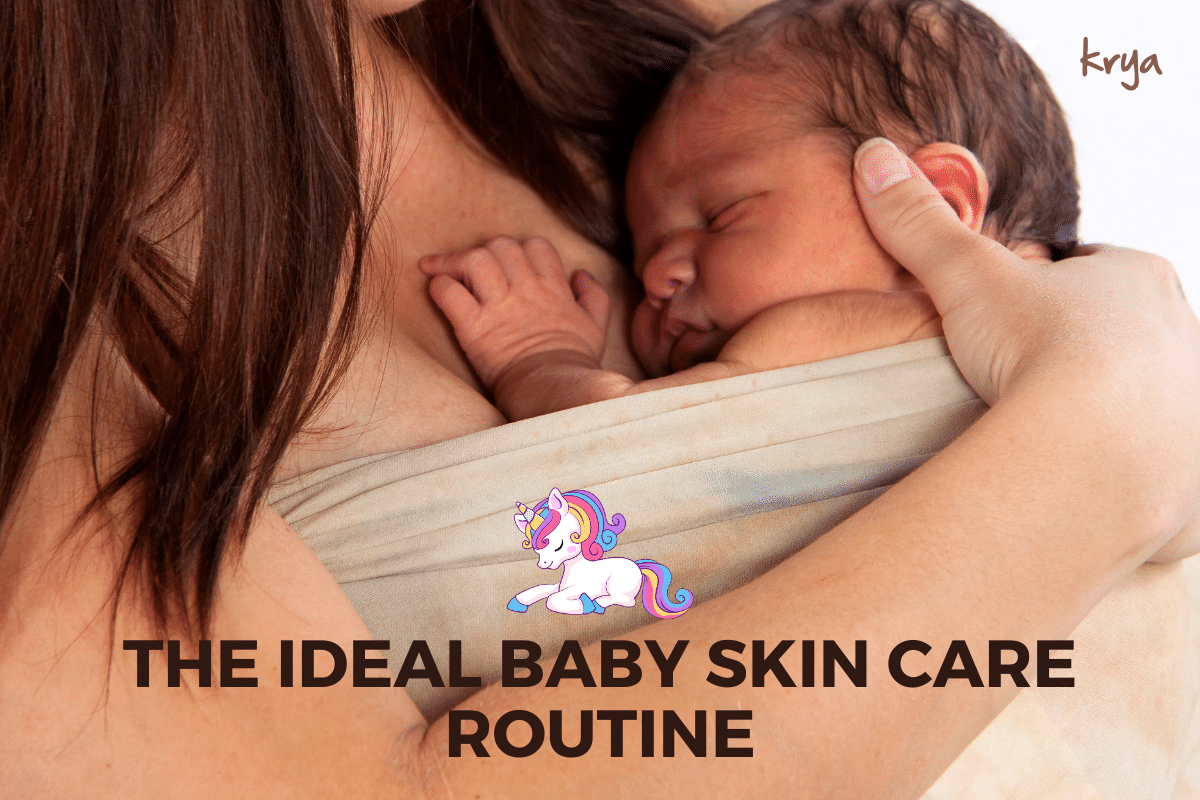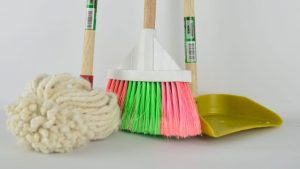This post was last updated on August 12, 2021 by Preethi Sukumaran
We are parents to a wonderful 13 month old. And not ashamed to admit that we were queasy about the prospect of diaper changes before the arrival of our daughter. As adults we live in a sanitised world with zero tolerance for weird smells of any stripe. We are always reaching for fragrant products (in our case a pure natural essential oil, of course) to banish the smells in our life.
Therefore as new parents, we did not even consider an alternative to disposable diapers. We are conditioned to treat anything poop related as gross and disgusting and disposable diapers presented the least messy solution. (for the parents that is!)
In the first month we went through an alarming number of disposable diapers. And we simply had to do some research to see if we were doing the right thing; to see if there was anything out there beyond disposable diapers.
With the wisdom of hindsight, I could have told my early parent self that of course we were not doing the right thing. Any product that is used so ephemerally and has to be thrown out simply cannot be good for the environment. And anything that works so eerily well to contain a natural bodily function cannot be great for the baby.
So here are the facts:
Calculating our diaper usage, our daughter, assuming toilet training by 2 (which is no longer the norm), would go through 5000 disposable diapers at a conservative estimate by the time she turns two.
We dispose these diapers without flushing solid waste down the toilet as it is supposed to be done. As a result, the diaper sits in a landfill slowly leaching human excreta and bacteria apart from heavy metals, dioxins, and solvents (from the diaper), into the ground contaminating the earth and the water.
What goes into a disposable diaper?

Disposable diapers sandwich an absorbent layer made of wood pulp and a super absorbent polymer (SAP) like Sodium Poly acrylate between two water proof layers of Poly ethylene and Poly propylene. Many brands also have fragrances embedded into the diapers and dyes for the printing.
Crude oil is the basic start for creating the outer water proof layers in disposable diapers.
 It takes one cup of crude oil (approx 236 ml) to produce enough plastic for one disposable diaper.
It takes one cup of crude oil (approx 236 ml) to produce enough plastic for one disposable diaper.
So according to my estimate, despite using public transport, walking and not owning a car, as parents we would have been responsible for burning up 1180 litres of crude oil just to manage poop and pee!
The middle layer of the diaper, which really what us parents depend upon is the absorbent layer which uses wood pulp and SAP. The wood pulp used in disposable diapers is a kind of chemical pulp which is produced by combining wood chips and chemicals in large vessels called digesters. In this process the heat and chemicals break down the lignin in the wood without damaging the cellulose fibre. The chemical pulp process is followed for applications like disposable diapers and sanitary napkins where a high absorbency and strength is required.
On an average 24 trees, using a chemical pulping process can make 1 ton of pulp.
A year’s supply of diapers uses anywhere between 200 – 400 kg of wood pulp, so every year a baby is in disposables, we are responsible for the destruction and misuse of about 10 trees!!!

The facts are so startling that they are worth summarizing again here. If we use disposable diapers exclusively for the first two years of the baby’s life, we are responsible for decimating
- 1180 litres of crude oil and
- 20 trees

It is worth noting here that we have not even talked about other baby essentials like cosmetics, which use crude oil and baby wipes which burn through wood pulp.
Beyond these obvious environmental hazards of disposable diapers, there are several immediate health hazards for the baby too.
Health concerns with disposable diapers
Sodium Polyacrylate ( The super absorbent polymer or SAP)

Roughly 5 grams of polyacrylic acid is added to each disposable diaper in powder form. This 5 grams absorbs 30 times its weight in water or30 ml per gram so a disposable diaper can absorb roughly 150 ml of liquid.
The problem arises because urine is not the same as water. You can safely pour 150 ml of water into a diaper and the diaper will hold its ground.
How does a super absorbent polymer work?
Sodium Polyacrylate is a chemical with a very long chain of carbon atoms bonded with sodium atoms in the molecule’s centre. When Sodium Polyacrylate is exposed to water, the higher concentration of water outside the polymer than inside will draw the water in via osmosis. The molecule will continue to absorb water until there is an equal concentration of water both outside and inside.
However Baby’s urine contains not just water but also salts. The salts from the urine will balance the salts inside the polyacrylate molecules so the water absorption stops much before its normal capacity. Therefore the more concentrated the urine (as is the case in night diaper usage, or during a long nap) the higher the probability that the diaper leaks.
When the diaper leaks, very often the sodium polyacrylate gel crystals leave the diaper and are deposited on the skin of the child. This deposition of tiny, white gel crystals on the baby is a common phenomenon noticed by parents during the diaper change.
A quick read through the safety documentation (MSDS) of Sodium Polyacrylate tells us just why this is so dangerous.
Sodium polyacrylate is extremely harmful to skin on direct contact and is known to cause lesions on skin. It may cause other skin irritation and may also be harmful if absorbed by skin. The MSDS also states that the chemical, physical and toxicological properties of Sodium Polyacrylate have not been thoroughly investigated!
The company MSDS sheet advises immediate washing of skin with soap and copious amounts of water on contact. Unfortunately, most of us get to see the gel crystals only when we change the diaper – we have no way of knowing for how many hours they have been in contact the baby’s skin / private parts.
2. Dyes used on the diaper:
Certain dyes used on disposable diapers have been known to add to skin irritation and repeated exposure to these dyes have been shown to cause allergic reactions resulting in diaper rashes and have possible long term carcinogenic effects. Some examples are:
Disperse Yellow 3: A recent (Aug 2012) study by The Office of Environmental Health Hazard Assessment’s (OEHHA) Reproductive and Cancer Hazard assessment branch concluded that the dye , Diverse Yellow 3 is carcinogenic. This evidence comes from a 104 week study conducted among male and female rats showing statistically significant increase in benign and malignant liver tumours among male rats and statically significant increase in lymphoma and leukaemia among female rats.
Disperse Orange 3: This is a textile dye used to colour natural and synthetic fabric and is also used in personal care products. This dye may cause immunotoxicity or skin or skin sense organ toxicity
Disperse Blue 106/124: These two dyes or a combination of the two are commonly used to colour polyester and acetate textiles like those found in disposable diapers. Perspiration typically encourages dye release from the fabric or blend, and can cause marked dermatitis among those sensitive to the dye. Both dyes are known allergens and triggers for textile related dermatitis and should certainly not be used in a product meant for tender, sensitive baby skin.
3. Dioxin exposure
Diapers made from wood pulp contain small amounts of dioxin, a common environmental pollutant. When wood pulp is bleached using chlorine to make it white from its original brown colour, dioxins form as a by product of the process.
Certain dioxins are known carcinogens and have been known to affect the reproductive and immune systems.
Dioxins are a health threat both in disposable diapers and disposable feminine hygiene products.
4. Increase in scrotal temperature
In 2000, a study was done by a group of German researchers to understand causes behind dropping fertility rates across the country. This study was published in the British Medical Journal in the October 2000 issue and is available as a free download for those inclined.
In this they studied 3 groups of male infants from very young pre-term infants to infants aged about 1.5 years and found a statistically significant increase in scrotal temperature when male infants were put on disposable diapers. The increase in scrotal temperature varied between 0.6 deg centigrade to 1.1 degrees centigrade, with younger children experiencing higher temperature increases.
The researchers also found a breakdown in the body’s natural cooling mechanism which is normally present in adult males – therefore when the temperature went up it stayed up.
The starting point of this study was an effort to understand declining fertility rates in Germany over the last 30 years, and the researchers concluded that the use of disposable diapers for male infants could be a cause of concern, and speculated that this could be a part contributor to declining male fertility rates in Germany.

So what are my options?
After the doom and gloom you just read, you might be justified in wondering if your only option to disposable diapers is either really early toilet training or to cultivate a grin and bear it attitude.
Enter modern cloth diapering.
Modern cloth diapers (MCD) are reusable products with some distinct advantages for the baby and the environment. Instead of a chemical like SAP, they use a safe textile layer (insert) that physically absorbs poop and pee. The solid waste has to be flushed down the toilet and then the insert has to be washed before re-use.
MCDs are a vast subject worthy of another article, which we have covered in Part 2 of this post. Part 2 covers what modern cloth diapers are ( as opposed to ancient cloth diapers) , different brands and types of MCDs available in India, their usage and their care.





Looking forward to the blog on MCDs. Exhaustive work preethi and srini! Kudos!
Hey Jammi!
Thanks!
Vow. What an eye opener this really is. I am alarmed to know how much of natural resources it eats up and all the more so about how harmful it can be for babies. Hats off to you for your research.
Shyamala: It was alarming for us too. Thank you!
Hi Preethi, Very nicely researched article. Looking forward to the second part.
Thanks Aniruddh!
Looking forward to part two
Thank you Sarah – Will be up next week.
This is another amazing piece Preethi. I am eagerly waiting to read about the cloth option, especially the clean up. How do you keep cleaning so many cloth diapers. That would be the first question any of my both working, toddler parent friends will ask me. There are some organic, non toxic and bio degradable disposable diapers, but they are not perfect. some are 75% degradable and some still have some element of toxicity or something.
Thank you so much for the support Richa! Taking care of cloth diapers is pretty easy – it just seems hard when you think about it no when you do it. It is like doing any other laundry with emphasis on cleaning the inserts / diapers really well so that there is no poop or pee leftover, and not using so much detergent that it hasn’t been completely rinsed out of the diaper. I will be talking about caring for cloth diapers with our very own Krya detergent, where problem no.2 does not apply. You are right about bio degradable diapers which are flushable. They place a huge strain on the sewage system even in developed economies, and take their time to bio degrade. I am convinced reusable diapers are the way to go for parents who want to be sustainable – they take a little effort but the rewards are sweet.
Preethi, Excellent information.
GV
Hey GV! Thanks!
a great read and wonderful insight…being a new parent and an conscious consumer…i have been struggling to come to terms with my diapering decision…the MCD seem a bit difficult on the baby…i wish to come to using a brand which suits my baby most…happy parenting
Hi Sudha,
Thank you for reading and taking the trouble to comment. We struggled with MCDs as well in the beginning. They did not work at night for some time, so we only used them during the day.Every little bit helps – even if you can’t switch 100%, even a partial switch makes sense for the baby and the planet. Do try it out and write to me if you have any questions on this. Good luck!
Hi Preethi
Does this mean that sanitary pads are doing the same thing? Or are they made up of something else?
Right you are Ira. Yes sanitary napkins also contain many of these materials, but at a slightly lower level as the volume of liquid held by sanitary napkins are much much lower. There are 2 sustainable and healthy options in sanitary napkins – the first is the Diva cup, and the second are reusable cloth sanitary napkins sold by Eco Femme Auroville. I haven’t tried the Diva cup myself, although I do know many women who have and love it. I have personally switched to reusable cloth napkins from Eco Femme and can say they are MUCH better for the environment and yourself, and very easy to care for. Both options are worth exploring.
Thanks for reading and commenting on the Krya blog!
Kudos!!! An insightful articles!! Do know if there are some eco friendly adult diapers available in the market (preferably Chennai) ?
Thanks Srividya. No, I would not know – sorry.
Hi Preethi,
I decided to try out the menstrual cups after reading your article.. And it works like magic!! Thanks 🙂 🙂
I had decided to take a combination route initially: traditional nappies that I made from an old sari at home (which I am still using) plus disposables when we were out with her.
My daughter is now nearly three months old and we have consumed less than three packs of disposables (and most of it was during her hospital stay at NICU for infantile jaundice)
Then I discovered MCDs 🙂 and the husband brought back a bunch from the US (bum genius pockets) where they are significantly cheaper. So now while she is on regular nappies during the day, we use MCDs instead of disposables while out.
AND they have lovely bright colours 🙂
Hi Richa,
That is great. MCDs are indeed a blessing!
Hi Preethi,
Read your Dental article. Really scared to use Popular brands and brush now 🙂 – Till I make the powder at home, can you please suggest an organic and auyrvedic tooth powder readymade available ? Thanks
Srividhya
Hi Srividhya,
An organic toothpowder is really hard to find and does not exist at the moment. However a few ayurvedic brands are available – you could try Vicco’s toothpowder (and not the paste) – it is widely distributed and is a good product.
Hey Preethi, Great article! but could you provide some websites or links that sell MCDs & shecups and reusable pads for Indians?
That would be a great support here!
Thank you!
Hi Prabha, Thank you! Shecups and reusable pads are available online – natural mantra sells them or you can google this. MCDs are available in all baby retail site slike baby oye, first cry, etc. Hope this helps!